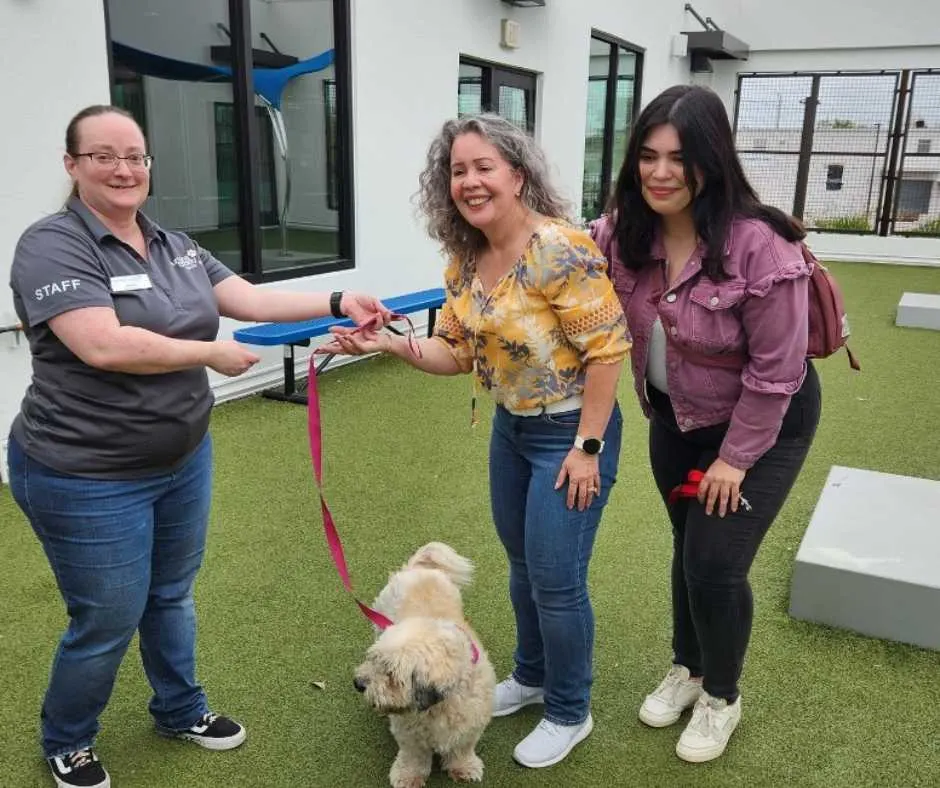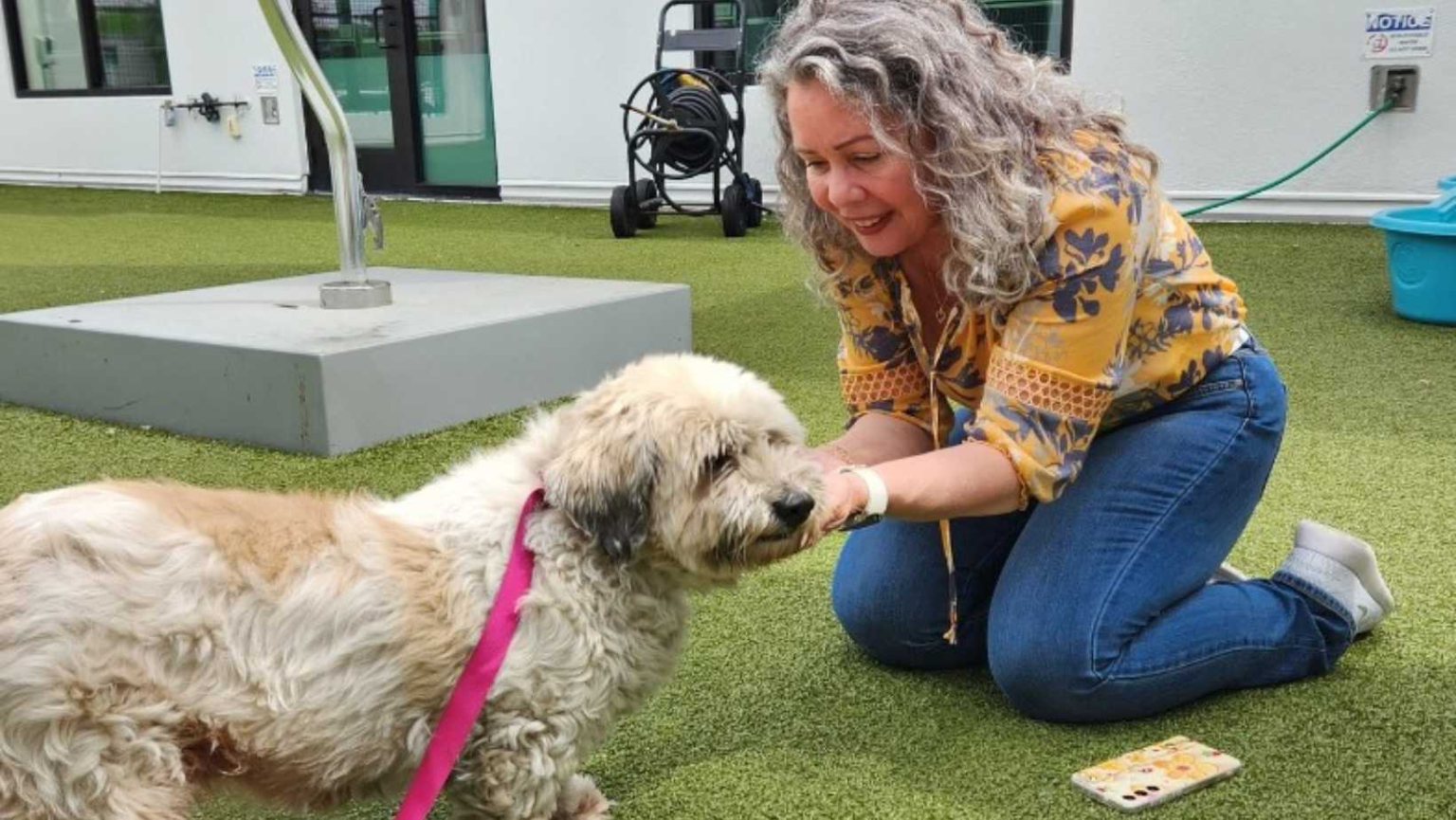In a tale that highlights the bond between pets and their owners, the Humane Society of Tampa Bay shares the amazing story of Cleo, a Cockapoo who vanished from her Florida home a decade ago.
Cleo, now a senior at 14 years old, arrived at the shelter as a stray, but the microchip embedded in her helped the rescue staff trace her back to her owner, Luisa.
This story tells the significance of keeping our pets’ microchips up-to-date.

Luisa was stunned when she received the call from the shelter, as Cleo had gone missing a decade ago.
Cleo’s family, who live in Florida, lost their beloved Cockapoo in 2014 when the curious pup wandered away from home.
Even though several years passed without any sighting of Cleo, her family remained committed to finding her.
They kept updating her microchip information regularly, hoping that it might help them locate her someday.

“They never lost hope and continued to update her microchip in the small hope that they would be reunited, even after they moved to Miami!” Said the Humane Society of Tampa Bay.
Cleo’s disappearance in 2014 left her family sad. But they never lose hope, believing they will see Cleo again.
And last week, their determination bore fruit when Cleo was found and reunited with her family.
Luisa drove five hours from their new home in Miami to Tampa Bay, brimming with anticipation for the long-awaited reunion.
The HSTB shared their story on social media, pressing the importance of pet microchips and never losing hope.

“We were hoping for a happy ending and for her to be reunited with her owners, but we did not foresee the joy her story would bring!” The Humane Society of Tampa Bay post said.
“This shows the power and importance of the microchip and never losing hope,” the post concluded.
But what is a pet microchip, and how does it work?
According to the American Veterinary Medical Association (AVMA), a pet microchip sends an identification number to a scanner linked to a database with the owner’s information.
Although it does not have GPS capabilities, a pet microchip remains one of the best way to find a missing pet.
A study by the AVMA showed that pets with microchips are more likely to be found than pets without it.
However, incorrect or outdated information in the database often makes finding a lost pet a daunting task.
While microchips offer a reliable means of permanent identification, the AVMA stresses that collars with updated identification tags are still important.
Moreover, the microchip is a vital backup if a collar is lost or removed, per AoL.

To ensure the effectiveness of your pet’s microchip, it’s important to maintain the registration information up-t-date, and request your veterinarian to do an annual scan to test its functionality.
Meanwhile, in late February, another reunion took place in Ohio.
Hannah, a devoted dog owner, was reunited with her long-lost pup, Will after he went missing in 2019.
Hannah’s keen eye and love for Will led her to recognize him online, resulting in a magical reunion at a Valentine’s Day adoption event.
The organization responsible for Will’s care, Clear the Clermont County Animal Shelter, hailed the reunion as “nothing short of magical,” highlighting the unbreakable bond between humans and their four-legged companions.
As the Humane Society of Tampa Bay mentioned, these heartwarming reunions remind us of the profound impact of microchips and the enduring power of hope.
So, let Cleo and Will’s stories serve as a beacon of encouragement to all pet owners: keep those microchips updated, and never lose hope, for miracles do happen.
Meanwhile, see how vets put microchips in pets through the vide below:










